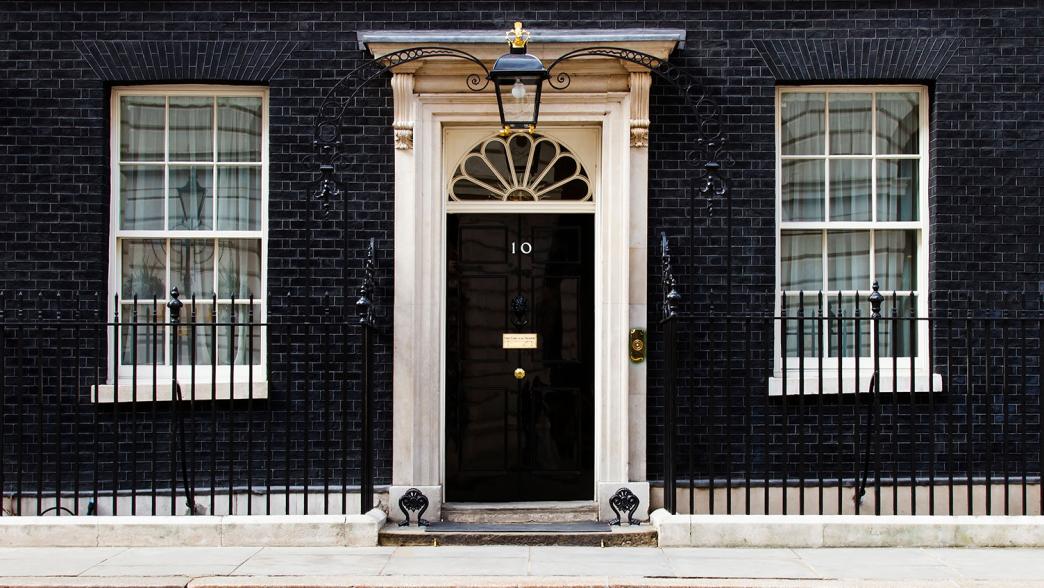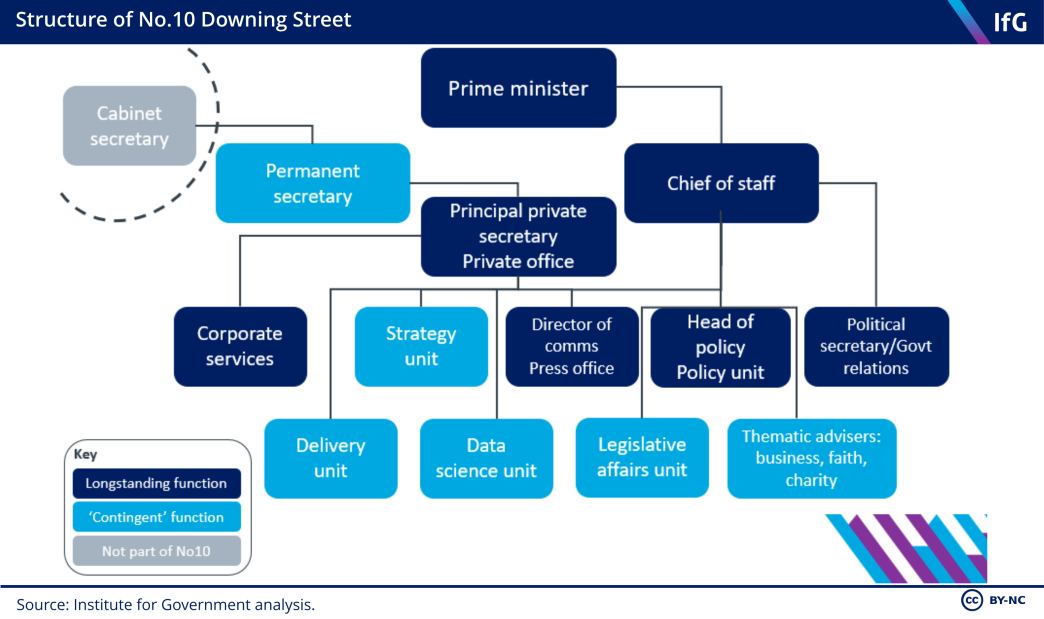
What is No.10 Downing Street?
No.10 Downing Street is the site of the prime minister’s office and official residence of the prime minister. It forms part of the centre of government, alongside the Cabinet Office (which it is technically a part of) and the Treasury. ‘No.10’ or ‘Downing Street’ is often used as shorthand to describe the prime minister’s office as a whole.
What is the history of the building No.10 Downing Street?
No.10 has been the prime minister’s office since 1732, when the King gifted the building to Robert Walpole, who is widely regarded as the first prime minister. Originally intended as a personal gift, Walpole insisted he instead accept it in his capacity as first lord of the Treasury. 7 Brown J, No.10: The Geography of Power at Downing Street, 2019. The right to reside in and use the property has been passed to every subsequent prime minister.
The prime minister’s office complex incorporates No.11 and No.12 Downing Street, which have been knocked through to connect them to No.10. The three buildings together contain over 100 rooms and have been described as possessing “maze-like corridors and a disorientating layout”.
8
Brown J, No.10: The Geography of Power at Downing Street, 2019.
What does No.10 Downing Street do?
No.10 does not have an official list of core functions. Prime ministers can adapt the way their office works to suit their preferences and working style, which inevitably leads to differences in the duties that their staff perform. Nonetheless, there are some similarities in what No.10 must do to support the prime minister.
Every prime minister has three roles – a party role as leader of the main governing political party; a parliamentary role, as leader of the government in parliament; and an executive role as leader of the executive arm of government. To support a PM across all three, functions that No.10 must perform include:
| Prime minister's role | No.10's supporting functions |
|---|---|
| Executive |
Provide policy advice and support Support long-term policy development and set direction Assist with cross government co-ordination and dispute resolution Track progress of government priorities Challenge departments, either on specific policy issues or ways of working Communicate with the public and media, and manage the government’s external relations |
| Parliamentary | Work with the Whips’ Office to give the prime minister information on parliament, including levels of support in the House of Commons and the mood and concerns of the parliamentary party |
| Party | Provide political input into decisions the prime minister makes in their executive and parliamentary roles |
In performing many of these functions, particularly those related to the prime minister’s role as head of the executive, No.10 works closely with the Cabinet Office.
Who are the most senior staff in No.10 Downing Street?
Downing Street staff fall into three categories: politically appointed special advisers (SpAds), civil servants, and permanent staff of the building like chefs and security guards who manage its upkeep and smooth running. While a large number of civil servants work in No.10, increasingly most of the most senior staff in No.10 have been politically appointed.
Prominent civil service roles include:
- PPS: Traditionally, the most senior civil servant in No.10 has been the prime minister’s principal private secretary (PPS). In recent years, the PPS has been appointed at a director general (SCS3) grade.
- No.10 permanent secretary: Some prime ministers appoint No.10 permanent secretaries. This job is often used as a way to convince someone back into government after they have left, as was the case with Sir Jeremy (later Lord) Heywood and the current cabinet secretary, Simon Case. The division of responsibilities between the permanent secretary and PPS has depended on individual circumstance and has sometimes overlapped.
Prominent politically appointed roles include:
- Chief of staff: Since 1997, every prime minister has had a politically appointed Downing Street chief of staff.
- Head of the No.10 policy unit: This role has been politically appointed since Margaret Thatcher was prime minister.
- Director of communications: In 2000, Alastair Campbell become the first Downing Street director of communications, a role held by political appointees since (although it was briefly split into ‘political’ and ‘government’ components under Liz Truss).
The co-existence of civil servants and political appointees can sometimes lead to unclear lines of accountability. Former cabinet secretary Lord Butler told the Institute that he felt it was currently “unclear whether the leadership of No.10 is in the hands of the civil service PPS, or in the hands of political appointees, particularly the chief of staff”.
This tension can be mitigated by a close working relationship between the PPS and chief of staff. Gavin Barwell, who served as Theresa May’s chief of staff from 2017–19 told the Institute for Government that “you work really closely with the prime minister’s principal private secretary…to run the building. And I think that is about setting the tone”. The PPS he worked with, Peter Hill, also told the Institute that the PPS and chief of staff “worked hand in glove…and the building got a solid message about what together we were doing”.
How is No.10 Downing Street structured?
At an Institute for Government event, Lord Butler described No.10 between 1982 and 1985 as relatively small and with a simple structure. Since then it has grown substantially – Peter Hill, PPS to prime minister Theresa May between 2017 and 2019, described No.10 as consisting of around 250 people during his time in government. In her report into the ‘partygate’ scandal of 2021, Sue Gray argued that “in terms of size, scale and range of responsibility [No.10] is now more akin to a small Government Department than purely a dedicated Prime Minister’s office”.

With the growth in size – and corresponding growth in the number of politically appointed special advisers – the structure of 10 Downing Street has become more complex. Alongside the private office – which has existed in some form since at least the 19th century – Downing Street now tends to contain multiple ‘units’. Some of these, like the Policy Unit and press office, are long-standing. Others are more recent innovations, with recent No.10s containing a delivery unit, data science unit, legislative affairs unit and strategy unit.
There is no regularly published, comprehensive data reflecting the size of No.10, but it is estimated that around 300 civil servants and SpAds currently work there.
What is the future of No.10 Downing Street?
There has been some criticism of No.10 as a place from which to run British government. Sir Alex Allan – Sir John Major’s PPS between 1992 and 1997 – argued at an Institute event that No.10 was “absolutely not fit for purpose for a modern prime minister’s office”.
Jonathan Powell, Tony Blair’s chief of staff, has said that his biggest regret in government was not moving the Blair operation out of Downing Street and into the QEII centre.
- Topic
- Civil service
- Keywords
- Civil servants Machinery of government Cabinet
- Position
- Prime minister Chief of staff Special adviser
- Department
- Number 10
- Public figures
- Rishi Sunak Theresa May
- Publisher
- Institute for Government